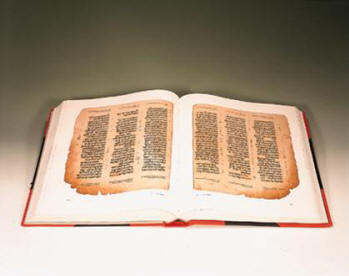

The manuscript was discovered by Antonio Ceriani in 1866 and published in 1876-1883. The books in Codex Ambrosianus appear to be arranged in historical, rather than traditional canonical, order.Ĭodex Ambrosianus is the only Syriac manuscript to contain the Apocalypse of Baruch and IV Ezra in full. These include the Wisdom of Solomon, Letters of Jeremiah and of Baruch, Bel and the Dragon, Susanna, Judith, Ben Sirach, 1 Maccabees, 2 Maccabees, 3 Maccabees, 4 Maccabees, 2 Baruch with the Letter of Baruch, 2 Esdras, and Book VI of Josephus' The Jewish War.

Like a number of other Aramaic Old Testament manuscripts, it also includes several of the Apocryphal books which are outside the Western Canon. by the Monastery of the God-Bearer, also known as Dier Al-Suryani (Arabic for The Monastery of the Syrians) situated in the Wadi Nitrun in the desert of Scetis south of Alexandria, Egypt.Ĭodex Ambrosianus includes all the books of the Old Testament (the Tanakh, or Hebrew Bible). It dates to the sixth or seventh century A.D., and is written in Estrangela script. 21 Inf 7a1 in the Leiden Peshitta Institute Edition of the Aramaic Old Testament.Ĭodex Ambrosianus is currently located in the Ambrosian Library in Milan, Italy, hence its name. And the end of it has the list of manuscripts.Codex Ambrosianus is an extremely important folio-sized Syriac (Eastern Aramaic) manuscript of the entire Aramaic Peshitta Old Testament.
OLD TESTAMENT MANUSCRIPTS PDF
The second PDF has the latter half of the book which is chapter 12 onwards, which is what is relevant to you.


OLD TESTAMENT MANUSCRIPTS FULL
While I can't give you a count, I can show you the full list that Ginsberg lists, and you can get the ideaĪs mentioned at the link i gave, the book is split into two PDFs. Here Ginsberg is referring to the earlier 916CE text that only contains the latter prophets. Note that St Petersberg codex can be ambiguous as it may refer to the Leningrad Codex, or the earlier 916CE text that only contains the latter prophets.
OLD TESTAMENT MANUSCRIPTS DOWNLOAD
The answer at this link by me, What manuscript(s) does BHS get Joshua 21:36-37 from? has some screenshots of Ginsberg's work showing some of the list of manuscripts it reviews, and links to where you can download it. It was published before the Aleppo Codex became widely available, and of course before the dead sea scrolls were discovered. and another work probably examines them also, Variae lectiones Veteris Testamenti ex immensa mss. Those manuscripts have been examined by C.D. We have the Aleppo Codex, and the Leningrad Codex.īesides those, there are a loads of manuscripts that aren't a complete OT, though no doubt taken together form a complete OT many times over. I'm not sure re an exact count, but the oldest would be the dead sea scrollsĪnything complete or near complete is much later like 900CE onwards. Cambridge holds nearly 200.000 of them in present day, but it also remains unclear how many of them are Old Testament manuscripts.Īny help or answer would be greatly appreciated. His library is called the second Firkovich collection, and it contains many Biblical manuscripts, but I can't make out whether all 17.000 manuscripts mentioned are Biblical or how many of them are Old Testament manuscripts.Īnother collection is the Cairo Geniza collection, which consisted of 300.000 manuscripts before being dispersed. I also came across the library of a man named Abraham Firkovich, who apparently managed to obtain at least 1.300 Samaritan manuscripts of the Pentateuch, the first 5 books of the Bible. Wikipedia lists that there are about 2000 manuscripts of the Septuagint version of the Old Testament today. When looking into this, the closest I got to an answer is that the Masoretes were great copyists, but that they also had a way of disposing of older manuscripts, through the process of burial, and that this is the reason there supposedly aren't many preserved manuscripts of the Old Testament.


 0 kommentar(er)
0 kommentar(er)
